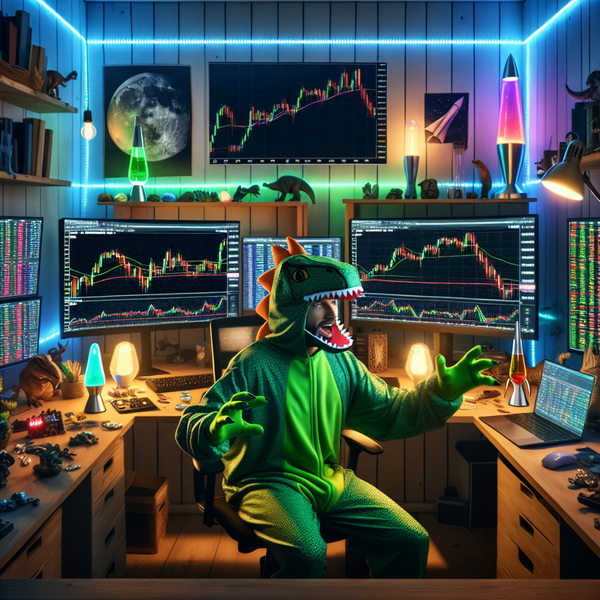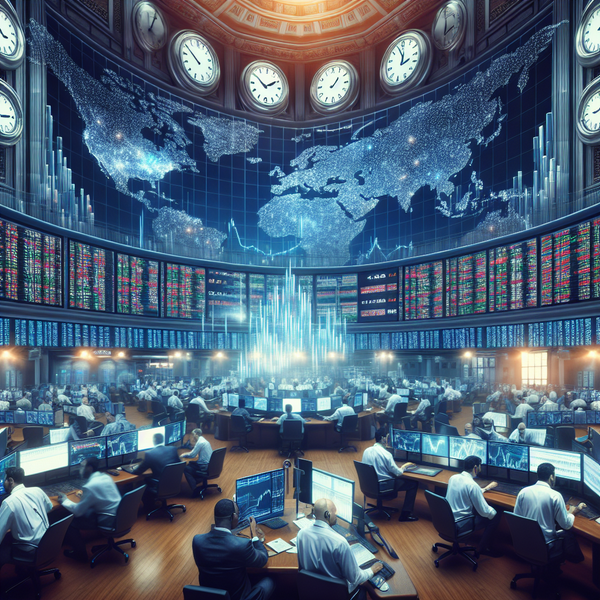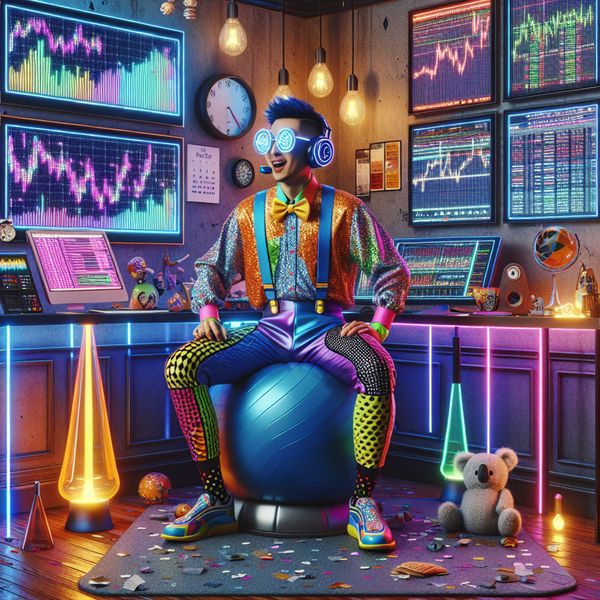10 Best Futures Algorithmic Trading Strategies
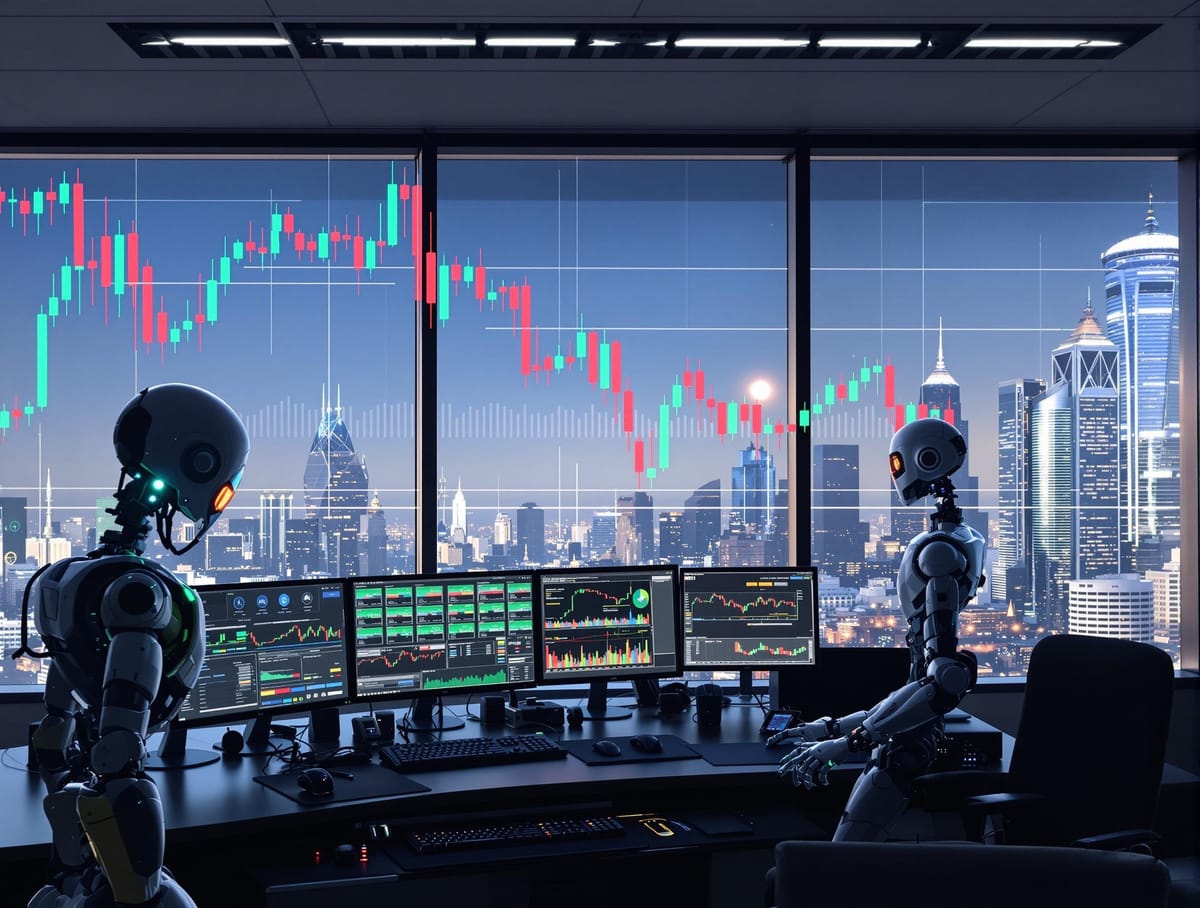
Why Futures Algorithmic Trading Strategies Matter in 2025
Futures algorithmic trading strategies are more vital than ever, as markets become faster, more complex, and increasingly data-driven. Traders using futures algorithms can quickly adapt to changing conditions, gain an edge over manual traders, and automate routine decisions. As futures trading systems evolve, staying ahead with the latest automated trading strategies helps you remain competitive in a crowded field. These advancements are making automated futures trading accessible to more traders, regardless of account size. How will you leverage these algorithmic trading strategies as we move deeper into 2025?
How Futures Algorithms Are Reshaping the Market
Futures trading algorithms are transforming markets by providing speed, accuracy, and consistent execution. Algorithmic futures trading uses mathematical models and real-time data to execute trades without emotion. This wave of automation increases liquidity but can also cause unpredictable surges in volatility when trading bots react to the same signals. Algorithmic trading strategies are now responsible for the majority of futures volume on many exchanges. How does this automated approach change the landscape for retail and institutional traders alike?
What Futures Traders Need to Know About Automated Trading Strategies
Futures traders need to understand how automated trading strategies can improve consistency and remove biases from trading decisions. Automated futures trading systems allow you to run strategies 24/7, even while you sleep. Choosing the best algorithmic trading platform means finding robust risk controls, backtesting abilities, and customization options. Automated futures trading also helps you scale strategies across multiple futures markets at once. What would it mean for your trading if you could reliably automate your edge?
How Do Futures Algorithmic Trading Strategies Work?
Futures algorithmic trading strategies use specialized code to define when to enter and exit trades, considering specific rules, signals, or data. Automated futures trading software executes trades instantly according to those rules. This automation removes human hesitation and lets you take advantage of fast-moving futures markets. With the right setup, you can even deploy multiple automated trading strategies on different markets at once. How might futures algorithms free up your time and energy for strategy development or research?
What Are Futures Algorithms Exactly?
Futures algorithms are sets of instructions written in code to automate buying and selling in the futures markets. These may include simple rules, such as moving average crossovers, or advanced logic using machine learning and big data. Algorithm software for trading translates these coded instructions into real trades through your broker. Automated futures trading strategies help enforce discipline by following the system every time—no second-guessing. Are you ready to hand off trade execution to a trusted algorithmic trading bot?
How Automated Futures Trading Strategies Save You Time and Stress
One major benefit of automated futures trading is the removal of emotion from trade execution. Automated trading strategies monitor multiple contracts and timeframes around the clock. This lets you take breaks, avoid errors from fatigue, and stay engaged in the market without burning out. Futures automated trading means trades happen the moment your signals appear, without hesitation or second-guessing. What would you do with the extra time and peace of mind this style brings?
Trend Following with Futures Trading Algorithms
Trend following remains a cornerstone of futures algorithmic trading strategies. By programming futures algorithms to detect and ride strong market trends, traders can capture sizable moves with less monitoring. Automated futures trading strategies shine here, as they stick to objective rules and don’t let emotions cut trends short. Trending markets provide repeatable patterns that are perfect for disciplined automation. Have you experienced the power of letting winners run in trending environments?

How Algorithmic Trading Strategies Ride Big Market Waves
The best algorithmic trading strategies for trends use indicators such as moving averages, price breakouts, or relative strength. Automated futures trading systems identify when to get in and out, following the price action closely. These strategies remove “market noise” and stick to the core trend, whether up or down. Riding big waves becomes easier when a futures algorithmic trading bot sticks to its plan. Will you let your algorithm manage the trade until the next reversal appears?
Why Trend Following Remains One of the Best Algorithmic Trading Strategies
Trend following is robust, scalable, and works well across different markets, which makes it a favorite for algorithmic futures trading. Automated futures trading strategies designed for trends tend to adapt well to changing market volatility. Futures algorithms measure trend strength and duration, helping you avoid exiting too soon. Even if trends reverse, risk management tools like trailing stops can protect profits. What’s appealing about using futures trading algorithms for trends that last days or weeks?
Mean Reversion Futures Automated Trading Strategies
Mean reversion is another cornerstone among the best algorithmic trading strategies. Here, futures algorithmic trading systems look for prices that have moved too far away from their average, expecting a snap back. Automated futures trading software excels at scanning for these opportunities across dozens of markets and timeframes. The combination of speed and objectivity can give you an advantage in choppy or range-bound markets. Is your trading style better suited for snapping back to the mean than riding long trends?
How Futures Automated Trading Systems Profit from Market Snapbacks
Futures automated trading strategies for mean reversion use signals like Bollinger Bands, RSI extremes, or price deviations. Once identified, the algorithmic trading bot enters trades expecting a reversion to the average price. These moves can happen quickly, and algorithms act instantly to capture the edge. Automated futures trading systems keep risk tightly managed by exiting if a snapback fails. Do you prefer short, quick trades over riding extended trends?
When Mean Reversion Works Best in Algorithmic Futures Trading
Mean reversion strategies work best in ranges or volatile, directionless markets where price overreactions are frequent. Algorithmic futures trading can catch repeated snapback moves better than a human watching many charts. Automated trading strategies are quickly disabled in trending markets to avoid getting run over by large moves. Knowing when to turn mean reversion on or off is key for future profits. Are you adapting your futures trading algorithms to market conditions?
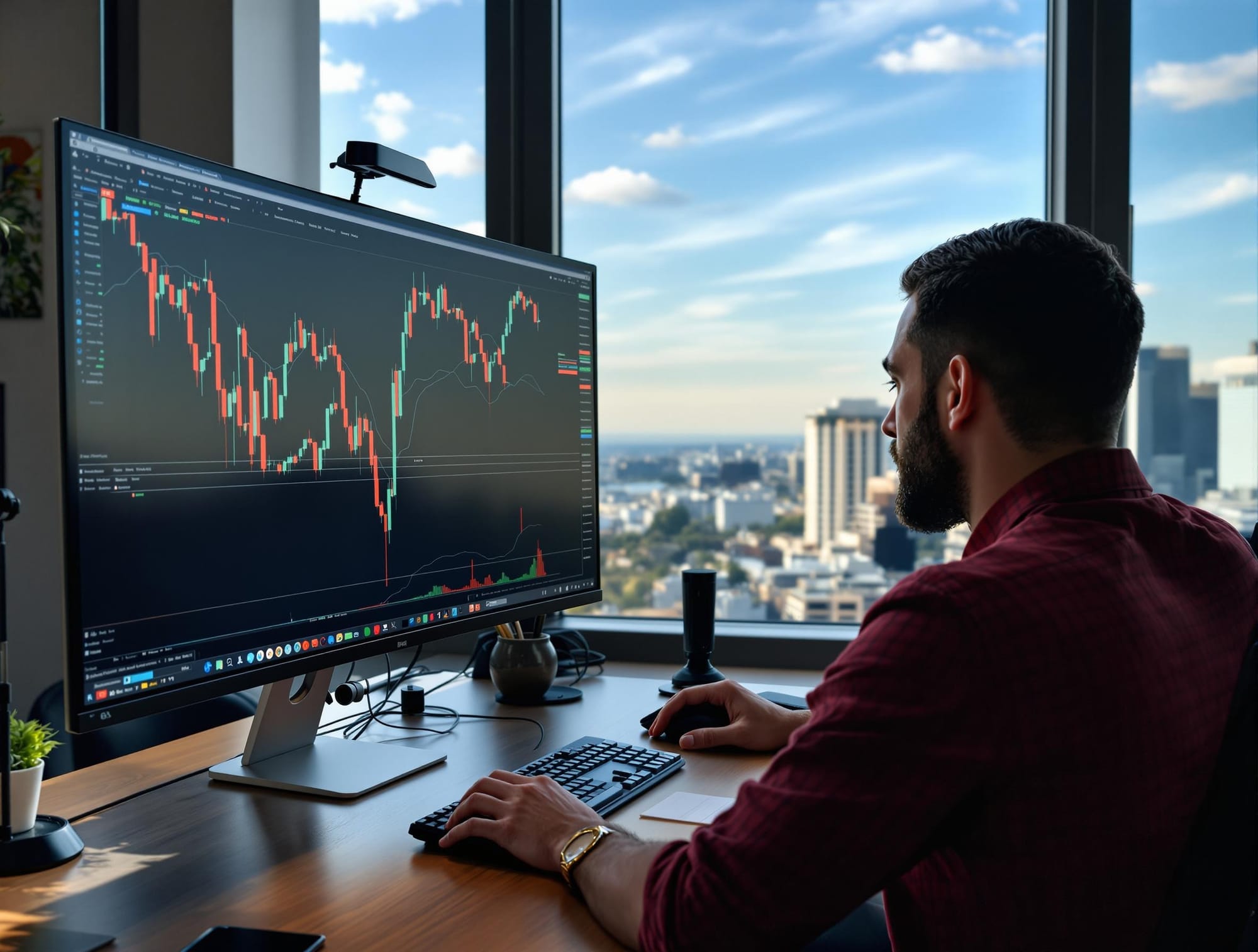
Arbitrage Algorithmic Trading Strategies
Arbitrage is the art of exploiting price inefficiencies across different markets, contracts, or timeframes. Algorithm software for trading can scan countless spread relationships in seconds, spotting micro gaps that humans would miss. Futures algorithmic trading strategies for arbitrage are all about tiny, consistent wins. Does your current approach take advantage of small, persistent mispricing's in futures markets?
How Algorithm Software for Trading Spots Price Gaps
Arbitrage algorithms monitor related markets or contract months, flagging price divergences that exceed historical norms. These trades may last just seconds, with futures trading algorithms instantly buying the underpriced and selling the overpriced asset. Automated trading strategies thrive in liquid, fast-moving markets prone to inefficiencies. Are you looking for low-risk, high-frequency opportunities with your futures trading systems?
The Power of Micro Profits with Futures Trading Systems
Though each arbitrage trade may yield only a fraction of a tick, futures automated trading systems excel by repeating these trades thousands of times. Over time, these micro profits can add up, providing steady growth with lower risk. Algorithm software for trading also ensures consistent, rule-based execution not possible with manual trading. Can you see how small wins, stacked together, could steadily grow your account using automated futures trading?
Breakout Trading Using Futures Algorithms
Breakout trading is about catching sharp price moves when a market escapes a defined range. The best algorithmic trading strategies for breakouts identify price compression and set precise entry rules. Automated trading strategies are faster than human reflexes when a breakout hits, ensuring instant execution. Would you benefit from having a futures algorithmic trading bot to capitalize on sudden price surges?
Why Breakout Automated Trading Strategies Catch the Best Moves
Breakout strategies are designed to profit when markets move powerfully out of consolidation. By pre-defining criteria, futures trading algorithms avoid fakeouts and only enter when a clear breakout occurs. Automated futures trading software enables you to trade multiple breakouts in different markets at once. Is your current manual reaction time fast enough to ride the biggest market moves?
Setting Up an Algorithmic Trading Bot for Breakouts
To build a breakout algorithmic trading bot, you specify the range or volatility filter that must be broken for trade activation. Algorithmic trading bot platforms handle order placement, stops, and risk controls automatically. The best algorithmic trading platform lets you customize triggers and filter out false breakouts. How can automation help you avoid hesitation and act instantly when an opportunity appears?
Momentum Algorithmic Trading Strategies
Momentum strategies look to exploit price direction and speed over short periods. Automated futures trading systems measure factors like volume, volatility, or rate of change to enter trades with the prevailing force. These strategies are vital for futures algorithmic trading because they capitalize on bursts of market energy. Are you currently taking advantage of fast, strong price moves, or are you missing out?
How Automated Futures Trading Systems Capture Speed and Strength
Momentum algorithmic trading strategies track accelerating price movement and enter trades when a trend is picking up steam. Futures algorithms execute without delay, leaving little room for missed opportunities. Automated trading gives instant feedback, allowing for fast exits if momentum fades. What would capturing just a few more strong, fast trades do for your bottom line?
Why Momentum Trading Is Perfect for Algorithmic Futures Trading
Momentum plays are well-suited for algorithmic trading because they follow strict rules, with clear criteria for entry and exit. Automated futures trading systems are never distracted by emotions or news “noise”—they let numbers lead the way. Some of the best algorithmic trading strategies apply momentum filters, such as advanced AI algorithm for trading, to maximize edge. How can momentum automation increase your trading frequency and consistency?
Scalping with a Futures Algorithmic Trading Bot
Scalping is a fast-paced style that targets tiny moves repeatedly throughout the trading day. The best automated futures trading software can execute hundreds of scalps in minutes, something no human could achieve alone. Futures algorithmic trading strategies for scalping require lightning speed and discipline. Would you consider letting a bot handle rapid-fire.
How to Build a Super-Fast Futures Trading Algorithm
To build a super-fast futures trading algorithm for scalping, focus on minimizing order latency and maximizing execution speed. This means using a best algorithmic trading platform and stable algorithm software for trading with direct market access. Many traders program their futures trading algorithms to spot tiny price inefficiencies and execute multiple trades per minute. High-speed data feeds and efficient, simple code are crucial for this type of algorithmic trading strategy. Have you explored how technology upgrades can improve your scalping results?
Why Scalping Thrives with Automated Futures Trading Systems
Scalping is about taking quick, small profits many times throughout the trading day, an ideal fit for automated futures trading systems and bots. Human traders simply can’t match the lightning reaction speeds and perfect discipline of a futures algorithmic trading bot. Automated trading strategies excel at catching fleeting opportunities and managing the high-frequency order flow required. Consistency and speed are why the best algorithmic trading strategies for scalping rely on automation. Could leaving the repetitive work to algorithms help you focus on long-term growth?
Statistical Arbitrage with AI Algorithm for Trading Futures
How AI Spots Price Patterns in Futures Markets
AI algorithms for trading analyze vast amounts of historical and real-time market data, uncovering price patterns invisible to the human eye. Statistical arbitrage futures algorithms use these insights to identify pairs or groups of futures contracts that tend to move together or revert to a mean relationship. This approach finds opportunities faster and with greater precision than traditional methods. As AI keeps learning, its pattern-recognition abilities become essential for edge in algorithmic futures trading. What patterns could advanced AI find that you might miss?
Why Statistical Arbitrage Futures Algorithms Need Big Data
Statistical arbitrage depends on analyzing huge volumes of tick data and market statistics, which gives an AI algorithm for trading the context to make smarter decisions. Big data availability and processing power are crucial for developing successful automated futures trading strategies in this space. Without robust data, statistical models can be unreliable or miss fleeting opportunities. Have you considered how investing in data infrastructure could boost your futures trading systems’ performance?
Market Making Automated Futures Trading Strategies
How Market Making Bots Manage Risk and Profit from Spreads
Market making bots continuously submit buy and sell orders to capture the bid-ask spread, providing liquidity while profiting from frequent, small trades. These futures trading algorithms dynamically adjust quotes based on real-time order flow, volatility, and inventory risk. Risk management is central: algorithms cut off inventory exposure when volatility spikes or trades move against them. With the right automated futures trading systems, traders can consistently profit even in sideways markets. Does your strategy include ways to benefit from simply providing liquidity?
Event-Driven Futures Algorithmic Trading
How to Set Up Automated Trading Strategies for News Events
Event-driven algorithmic trading strategies require integration of economic calendars, news feeds, and volatility filters into your futures trading algorithms. Bots can react to pre-set triggers—such as earnings, economic data, or geopolitical events—by executing planned trading actions. The best algorithmic trading platforms offer news parsing tools and APIs that allow automated strategies to stay one step ahead of market-moving headlines. How could automating your reaction to news protect you from unpredictable moves?
Trading Major Releases with a Futures Algorithmic Trading Bot
During major economic releases, a futures algorithmic trading bot can act instantly, entries or exits based on surprise levels in new data. Automated trading strategies can fade overreactions, join breakouts, or manage risk with speed that’s simply impossible manually. Speed and systematic response during high-volatility moments are the secret to exploiting these events for profit. Are you missing out by trying to trade major releases without automation?
Machine Learning Algorithmic Trading Strategies
Why AI Algorithms for Trading Are the Future of Futures
Machine learning and AI algorithm for trading are revolutionizing algorithmic futures trading by enabling strategies that learn and adapt to changing market dynamics. These approaches find subtle relationships and predictive signals no traditional model can detect. As machine learning grows more accessible, it will become standard in both institutional and advanced retail automated trading strategies. What could you achieve if your system continuously improved its decision-making over time?
How Machine Learning Powers the Best Algorithmic Trading Platform Choices
The best algorithmic trading platform now uses machine learning for improved signal accuracy, better risk modeling, and adaptive trade management. Platforms offer built-in support for Python, R, and big data tools to empower both pros and independent traders. This allows traders to build custom futures algorithmic trading strategies efficiently and with better predictive power. Are you using a platform that helps you harness the power of machine learning yet?
Choosing the Best Automated Futures Trading Software
Features You Need for Top Futures Algorithmic Trading
When evaluating the best automated futures trading software, look for real-time data feeds, customizable strategy building tools, risk management controls, and reliable order execution. The best algorithmic trading platform should also provide backtesting, walk-forward testing, and integration with popular brokerage APIs. A user-friendly interface and detailed reporting can help you analyze performance and refine your futures algorithmic trading strategies. What features would add the most value to your automated trading process?
Why Speed, Backtesting, and Customization Matter
Speed is critical for seizing opportunities in fast-moving futures markets, especially for high-frequency and scalping strategies. Comprehensive backtesting lets you evaluate your automated trading strategies using years of historical data, reducing risk before you go live. Advanced customization means you can fine-tune or design unique approaches not available “out of the box.” Should you prioritize robust testing and fast execution when picking your algorithm software for trading?
Building a Custom Futures Algorithmic Trading Strategy
When You Should Build vs. Buy Algorithmic Futures Trading Bots
Building your own futures trading algorithms gives you full control, allowing you to match automated trading strategies precisely to your goals and risk tolerance. However, it requires programming expertise and ongoing maintenance. Buying pre-built bots or software can save time but might come with limits on customization. Consider your resources, technical comfort, and whether off-the-shelf solutions can deliver your needed edge. Is your trading challenge unique enough to require custom development?
How to Test and Tweak Your Automated Futures Trading Strategy
Before running any new strategy live, use backtesting and paper trading to review historical performance and make adjustments. Monitor live results with small positions and tweak parameters as the market changes. The best algorithmic trading platform provides transparent reporting and real-time analytics so you can refine your futures algorithmic trading strategies. What’s your process for continuous improvement and testing?
Does Algorithmic Trading Work in Futures Markets?
Does Algorithmic Trading Work?
Yes, algorithmic trading works—if you use robust, well-tested strategies and maintain discipline. Automated futures trading allows traders to execute precise entries and exits, follow strict risk rules, and avoid emotional errors. Still, not every algorithm is profitable forever; strategies must evolve as markets change. Is your approach dynamic enough to keep up with shifting market conditions?
Why Futures Traders Must Keep Adapting Their Strategies
Markets evolve constantly, and futures algorithmic trading strategies must adapt to new volatility, technology, and data sources. Automated futures trading systems that were profitable last year may underperform if left unmonitored. Top traders regularly review performance, tweak rules, and add new signals. How frequently do you review and refresh your futures algorithmic trading systems?
Is Algorithmic Trading Profitable for Futures Traders?
How Smart Risk Management Makes Futures Automated Trading Profitable
Are you using futures trading algorithms as a way to automate and enhance your risk management? Even the best algorithmic trading strategies can fail without strong risk controls. Successful traders use automated futures trading to enforce stop-losses, position sizing, and maximum drawdowns in real-time. Small edge plus strict discipline equals steady growth.
What Funded Futures Traders Should Know About Algorithmic Profits
What opportunities could open up if you leveraged automated trading to maximize your funded account? For funded futures traders, consistent algorithmic profits can help meet funding requirements and unlock higher capital allocations. Many funded accounts permit algorithmic futures trading but require detailed records and adherence to specific risk practices. Using the best automated futures trading software can help traders meet goals while managing the risks of drawdown or high-frequency losses.
Finding the Best Algorithmic Trading Platform for Futures
Features That Separate the Best from the Rest
The best algorithmic trading platform offers speed, reliability, flexible strategy development, and strong customer support. Look for integration with major futures exchanges, support for a wide range of automated trading strategies, and clear reporting. Advanced analytics, real-time alerts, and robust error handling can make a huge difference for active traders. What platform features matter most to you for executing futures algorithmic trading strategies?
What to Look for Before Choosing Algorithm Software for Trading
Before you choose algorithm software for trading, ensure it matches your trading style, supports your preferred contracts, and provides transparent pricing. Test the platform’s stability, backtest your futures trading algorithms, and read user reviews for real-world feedback. Platforms that allow easy modifications, secure connectivity, and clear documentation support long-term success. Are you confident your chosen software aligns with your algorithmic futures trading needs?
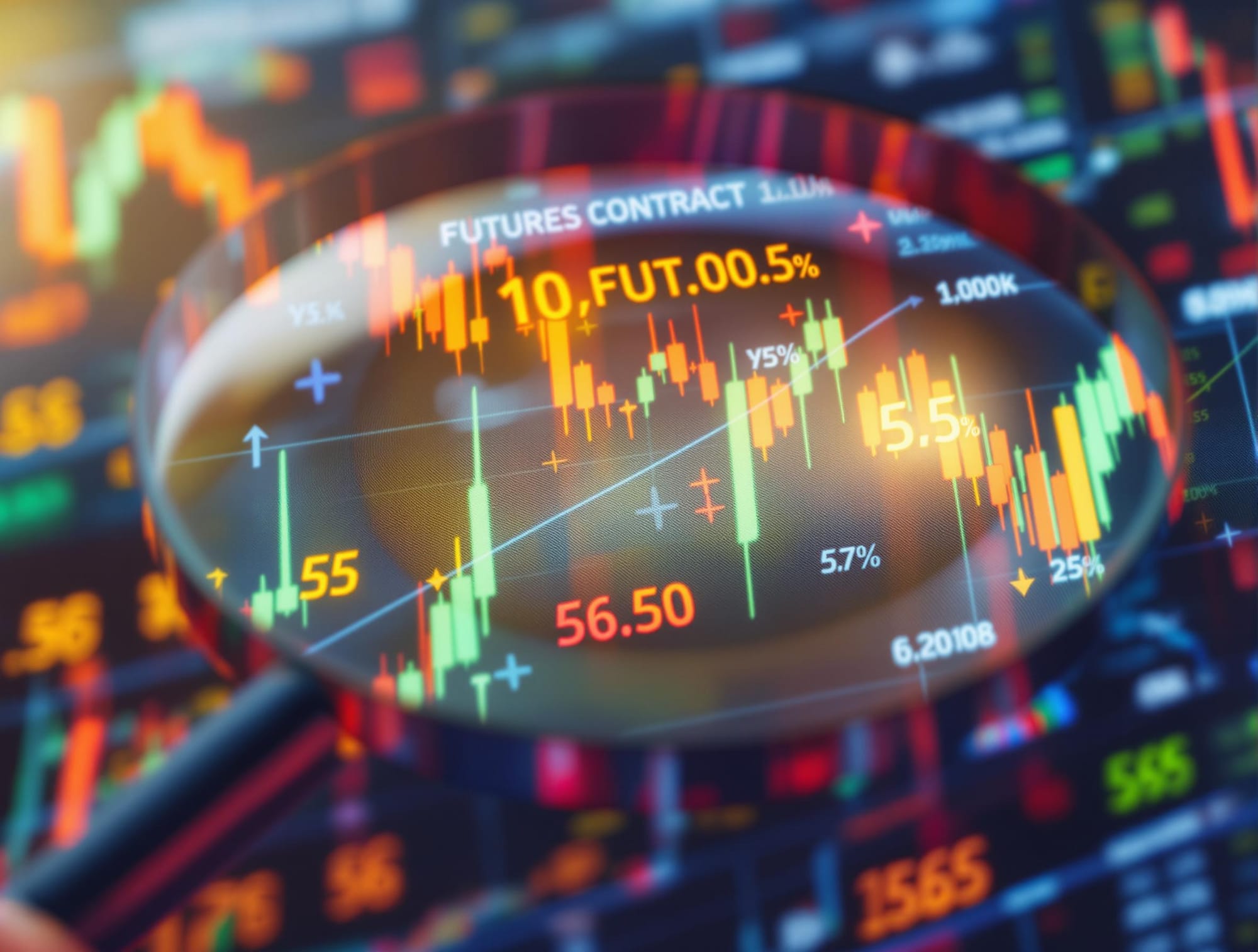
Final Thoughts on Algorithmic Trading Strategies
How to Keep Growing Your Futures Automated Trading Skills
Algorithmic trading is a fast-evolving field, so continuous learning is essential. Stay updated with new developments in AI, machine learning, and best automated futures trading software through blogs, courses, and industry webinars. Collaboration with other algorithmic traders and participation in online forums can also sharpen your skills. Where can you find resources or mentors to take your future futures algorithmic trading strategies up a notch?
Why Automation Plus Discipline Wins Long-Term
Success in algorithmic futures trading comes from combining robust automation with strict discipline. Automated futures trading handles the heavy lifting, but the trader’s responsibility is to monitor, improve, and adapt those strategies. Systems can generate consistent results only if regularly reviewed and managed. Are you ready to invest both in advanced automation and the mindset needed for long
